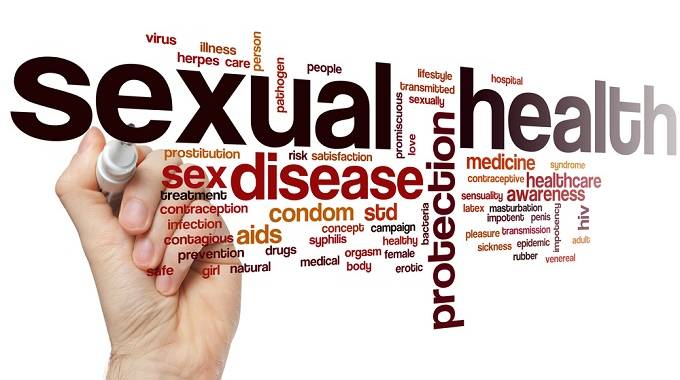Safe sex practices

Dr Tatenda Simango
When the lockdown was eased, we got an increase in cases of patients with pain on passing urine with copious amounts of a cream discharge.
The tests we did showed sexually transmitted infections (STIs) as the cause. Most of the clients were young and single with multiple sexual partners.
During the lockdown, it was difficult to source condoms, but irresponsible sexual behaviour is still not condoned. I thought it would be prudent to remind the reader about the risk of unsafe sex practices.
In this article we shall discuss how STIs present as well as common STI causes. These conditions have been present since time immemorial with early records as early as 1500. They commonly present with changes in how the urine system functions.
Pain may be experienced when passing urine, with it may come a discharge of varying colours, commonly creamy yellow or green which may be tainted with blood. Ulcers or wounds may appear on the private parts or between the buttocks, even in the groin at times. Oral sex puts one at risk of developing the STIs.
Males may develop:
– A discharge from their penis, the discharge may have a foul smell,
– A burning sensation when urinating,
– Pain and swelling in one or both testicles,
– Blood in the urine;
– Ulcer or wound on the private parts.
Females may have:
– An abnormal vaginal discharge which may have a fish-like odour,
– A burning sensation when urinating,
– Pain during intercourse,
– Vaginal bleeding.
Syphilis is one of the most notorious STIs of all time. It was the HIV of yesteryear before the discovery of penicillin antibiotic. Classically, it presents with a single chancre (a firm, painless, non-itchy skin ulceration usually between 1cm and 2cm in diameter) though the secondary syphilis, a diffuse rash occurs, which frequently involves the palms of the hands and soles of the feet.
There may also be sores in the mouth or vagina. If untreated, it can develop over the years to affect other body systems like the brain and the heart. All pregnant mothers are screened for it so that they may be treated for it before delivery so as to reduce the chances of transmitting it to the baby at delivery.
Gonorrhoea, colloquially known as the clap or drop, is another common cause of STIs. Most infected men with symptoms have inflammation of the penile urethra associated with a burning sensation during urination and a discharge from the penis.
In men, discharge with or without burning occurs in half of all cases and is the most common symptom of the infection. This pain is caused by a narrowing and stiffening of the urethral lumen. The most common medical complication of gonorrhoea in men is inflammation of the epididymis. Gonorrhoea is also associated with increased risk of prostate cancer.
Chlamydia is a common STI that can infect both men and women. It can cause serious permanent damage to a woman’s reproductive system. This can make it difficult or impossible for her to get pregnant later on. Chlamydia can also cause a potentially fatal ectopic pregnancy (pregnancy that occurs outside the womb). This could cause an eye infection or pneumonia in the new-born. Having chlamydia may also make it more likely to deliver your baby too early.
Common symptoms one may notice:
– The herpes simplex virus is categorised into two types:
– Herpes simplex virus type 1 (HSV-1) and herpes simplex virus type 2 (HSV-2).
– HSV-1 is mainly transmitted by oral-to-oral contact to cause oral herpes (which can include symptoms known as “cold sores) but can also cause genital herpes.
– HSV-2 is a sexually transmitted infection that causes genital herpes.
Most oral and genital herpes infections are asymptomatic.
Symptoms of herpes include painful blisters or ulcers at the site of infection. In addition to genital ulcers, symptoms of new genital herpes infections often include fever, body aches and swollen lymph nodes.
Herpes infections are most contagious when symptoms are present but can still be transmitted to others in the absence of symptoms.
Infection with HSV-2 increases the risk of acquiring and transmitting HIV infection. More women are infected with HSV-2 than men. This is because sexual transmission of HSV is more efficient from men to women than from women to men.
After an initial genital herpes infection with HSV-2, recurrent symptoms are common but often less severe than the first outbreak. The frequency of outbreaks tends to decrease over time but can occur for many years. People infected with HSV-2 may experience sensations of mild tingling or shooting pain in the legs, hips and buttocks before the appearance of genital ulcers. HSV-2 and HIV have been shown to influence each other.
According to the World Health Organisation, HSV-2 infection increases the risk of acquiring a new HIV infection by approximately three-fold.
Local hygiene is advised; wash twice a day with salt water (1 teaspoon salt in 1 litre water).
Infection with HSV-2 in people living with HIV (and other immunocompromised individuals) can have a more severe presentation and more frequent recurrences.
HIV is the infamous STI caused by a virus that has been a serious public health concern in the 21st century. Pediculosis pubis (pubic lice) is another STI that may occur, one should not shave as this affects treatment. Genital warts are also transmitted sexually.
There is a risk of transmitting the above-mentioned infections, to an unborn child (vertical transmission). Syphilis, chlamydia, herpes simplex 2 and HIV in pregnancy complicates pregnancy, leading to pre-term delivery, low birth weight and at times blindness of the new born.
Other complications include:
– Ophthalmia neonatorum (eye disease of the new born) occurs in first year of life.
– Pelvic inflammatory disease in women- ascending of micro-organisms from the vagina and cervix to the endometrium, fallopian tubes and pelvic structures presenting with temperature greater than 38 degrees with marked abdominal pain
– Pelvic abscess (affects females), needing operation.
Prevention is hinged on health education; promoting risk reduction and treatment compliance and provision of condoms. Couples should get tested and screened for STIs. It is an individual’s responsibility to practice safe sex. Delaying sexual debut is also advisable as teenagers may not be confident to negotiate for safe sex.
Abstinence is the ultimate preventative measure. Till next week.
Dr Tatenda Simango can be contacted on [email protected] or follow him on Facebook@ 9th Avenue Surgery.










Comments